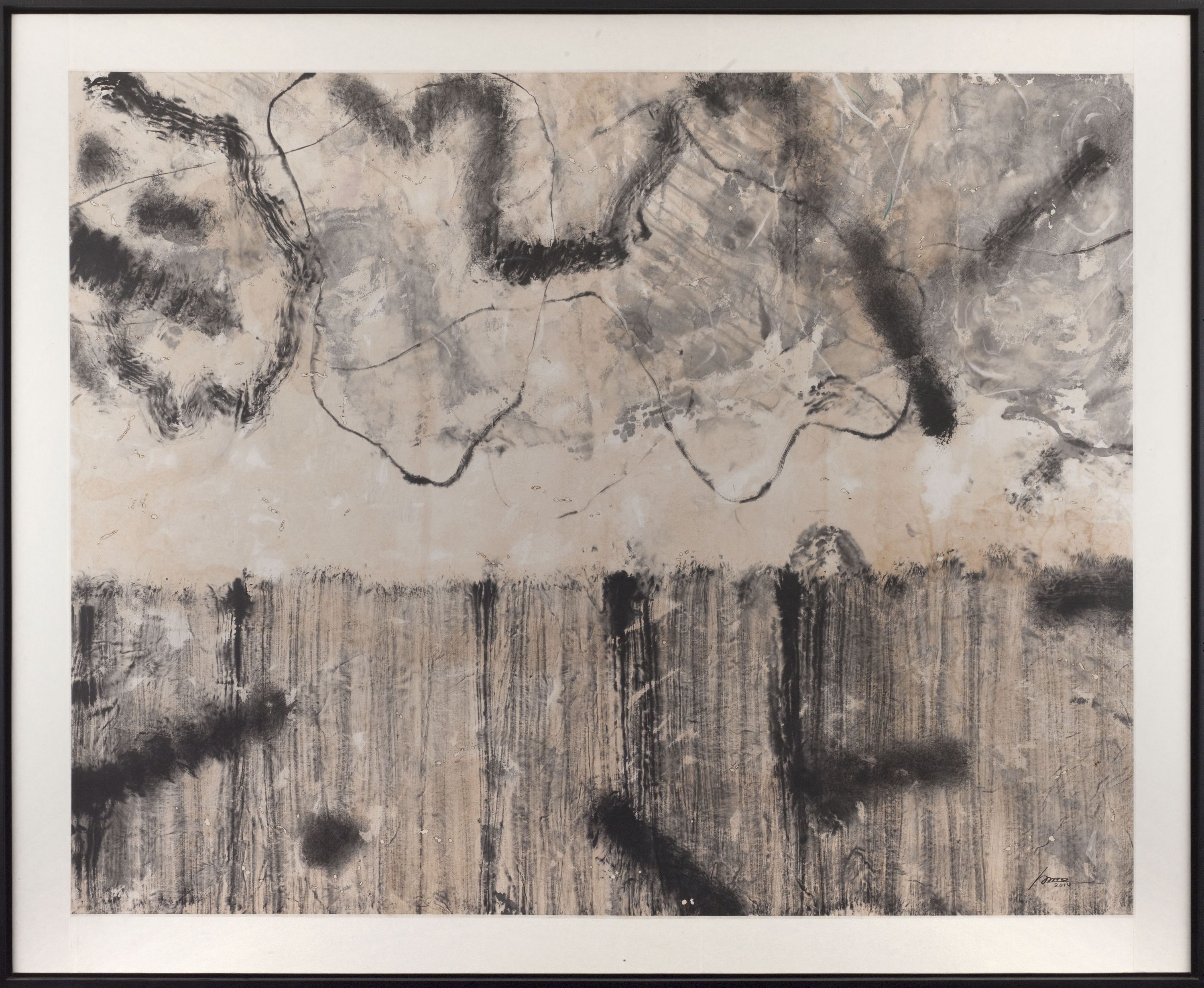
La culture rongée par les vers : rythme mélodique
Encre, Papier
Peinture
H. 141.9 x L. 179.2 x H. 167.6 x L. 204.7 cm
M.C. 2014-17
Don manuel, Bai, Ming 白明
Bai Ming is a leading figure of the current renewal of ceramic art in China and one of the artists developing a new synthesis of Chinese tradition and modernity, once again a major issue in the Chinese art scene. A native of Yugan in Jiangxi, some 100 kilometres from Jingdezhen, he graduated in 1994 from the Academy of Arts and Design at Tsinghua University in Beijing, one of the most reputed in China. He teaches there today, which has heightened his influence on the Chinese art scene.
One of the main subjects explored in Bai Ming’s work is an equivocal relationship with time and tradition.
This problematic has been present in his work since his earliest oil paintings. When he adopted the technique of ink on paper in 2003, these concerns came to the fore. While Bai Ming works in a particularly diverse range of styles in this medium, numerous paintings are characterised by the direct transposition of traditional Chinese painting techniques to the contemporary vocabulary deployed on the canvas. In so doing, Bai Ming is part of a current that emerged in the 1980s, earning recognition in the 2000s. The artists of this movement wanted to conserve the practice of ink painting as a fundamental element of the Chinese cultural identity, while transforming it from the inside. Bai Ming contributed to this objective through his lyrical or geometrised abstract style, and also in his framing of figurative subjects, which explored the decorativeness of a motif repeated over the whole surface rather than its representative role.
These paintings by Bai Ming convey his sense not only of the excellence of a tradition but also of the impact of the changes it has been subjected to. Bai Ming uses tea as a colouring agent and dots his works with blank spaces, symbolising silkworm holes and the passing of time.